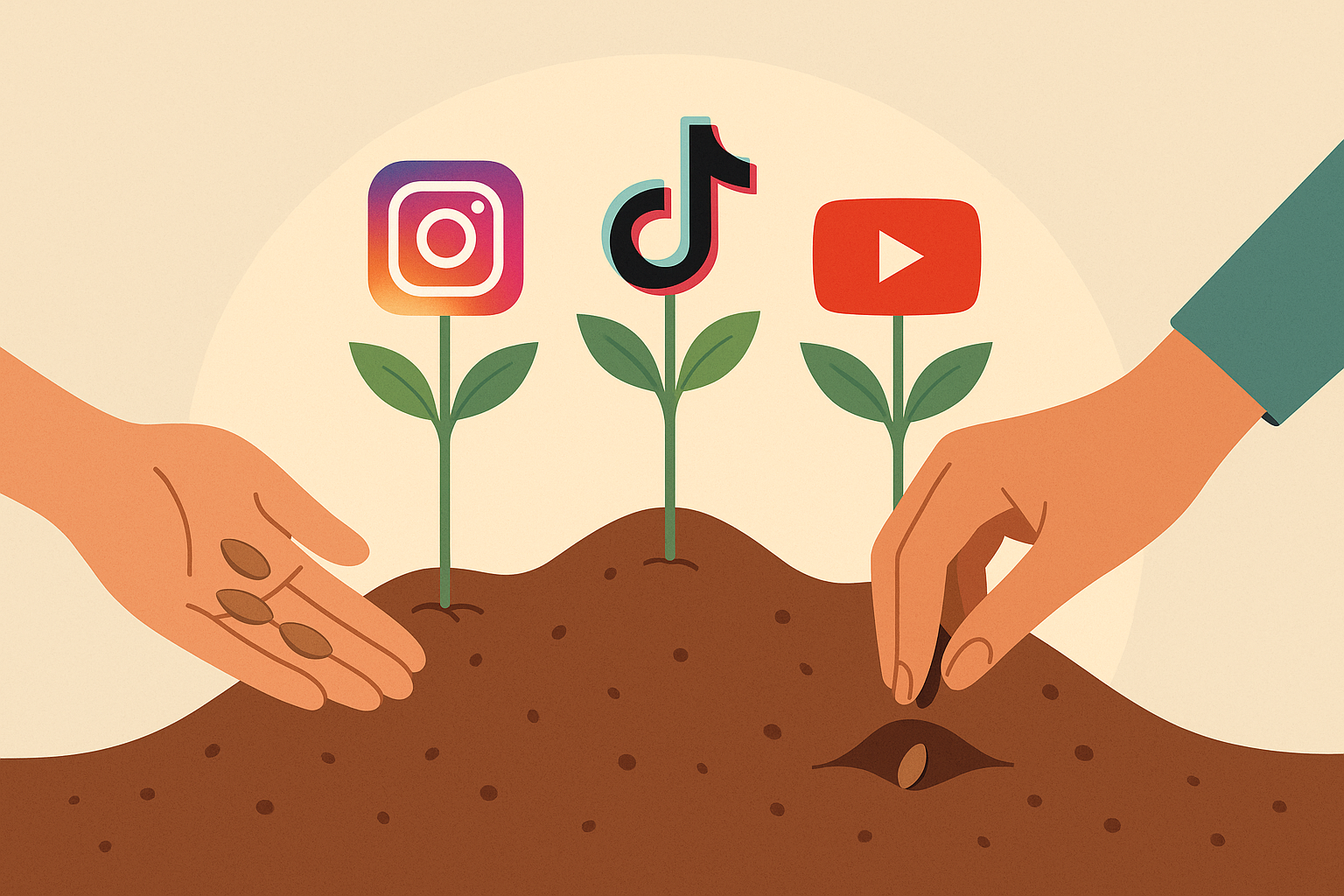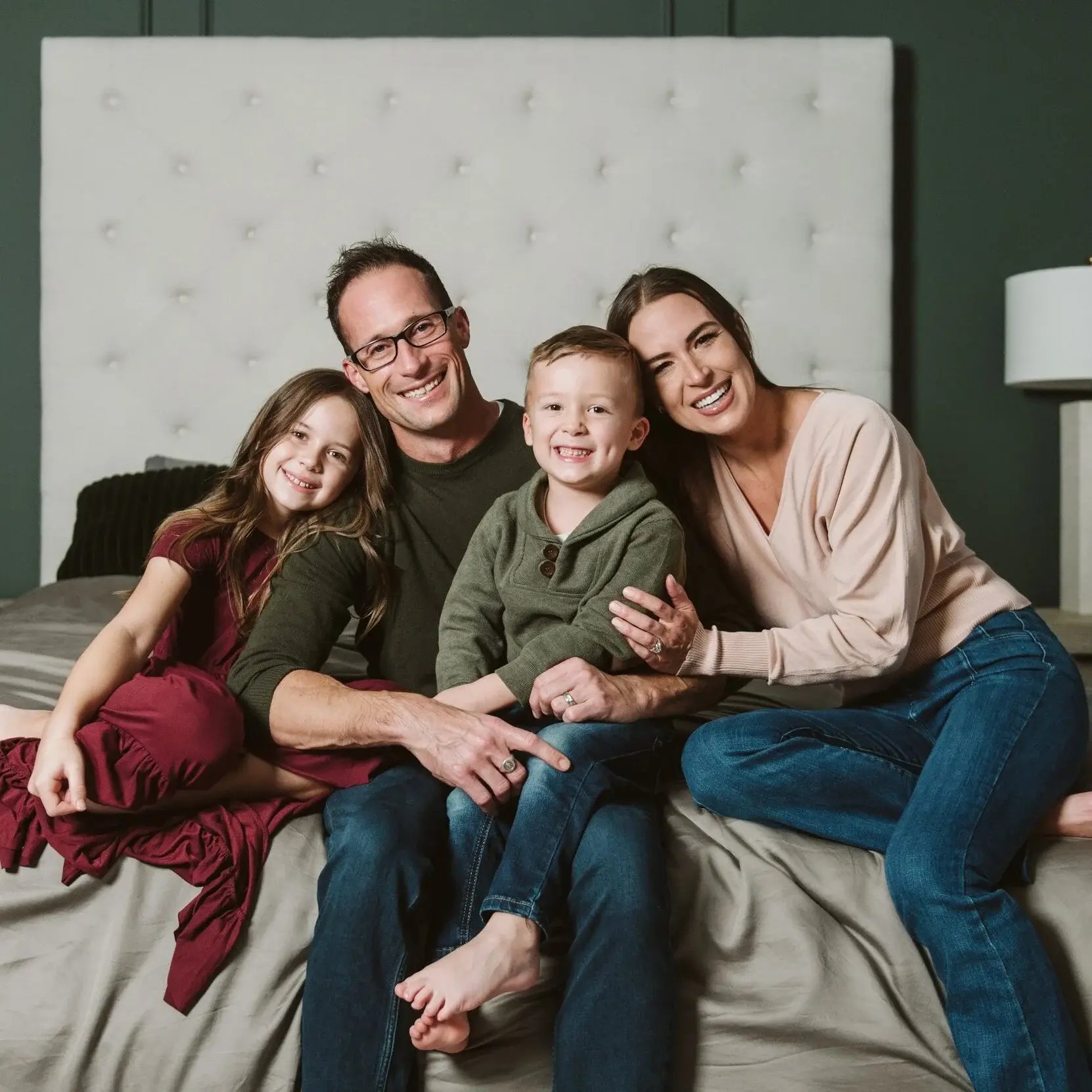American Eagle thought a big, splashy one-off campaign with Sydney Sweeney would make waves. But in today’s creator-driven landscape, those kinds of plays don’t hit the same way they used to.
Ostensibly, the brand would have had success on its hands, hoping a big-time Hollywood name could lend a bit of her brand-building prowess. But the “Sydney Sweeney has great jeans” tagline generated controversy, ignited backlash, and made the brand seem out of touch to many.

One-off campaigns come with a built-in risk: they rarely build lasting trust. As Nycole Hampton, a consultant and fractional marketing expert, put it: “Long-term partnerships turn creators into true brand advocates and extensions of your team. That consistency allows richer storytelling, giving audiences a chance to see the relationship evolve over time, and builds trust.”
Trust is now the currency of influencer marketing. It’s about long-term relationships, not one-off deals. And the data backs it up: Sprout Social reports that 61% of consumers trust creator recommendations more than traditional brand ads. No surprise, then, that brand advertising and creator content are becoming inseparable.
So, what are brands doing to move away from these one-offs and build new connections with trust-wary consumers? The answer is prioritizing long-term creator cohorts. Let's dive into it.
The Shift From One-Offs to Strategic Cohorts
Brands first have to define what it means to be in a “long-term” relationship with a creator.
- Is a long-term creator cohort anything above a one-off campaign?
- Does it last a few months?
- Does it look like multiple campaigns?
The idea behind a true creator cohort is to choose the right group of creators and make them an indefinite part of a brand’s ongoing marketing efforts. Ideally, these creators can participate in new marketing initiatives, product launches, and community efforts. Ideally, the creators will have trust with their audiences. This, in turn, extends to the brand.
To their credit, many brands are beginning to reuse influencers across multiple campaigns. According to PLANOLY’s 2025 Predictions for Content Creators and Influencer Marketing, 63% of brands at least engage influencers across multiple campaigns.
Part of that is due to marketers rethinking how they define creator success. Yes, brands like American Eagle can get mega-reach with a controversial ad featuring Sydney Sweeney’s “good jeans.” But that doesn’t result in long-term growth or build the trust brands hope for.
More brands are realizing that fewer, more effective creators deliver better results. Instead of scattering budgets across one-off posts that vanish as quickly as they appear, long-term partnerships allow brands to measure real impact over time—and ideally, see a lift in brand favorability.
Hampton notes: “Performance also compounds over time; audiences often need multiple exposures from a trusted voice before taking action.”
That’s what one-offs don’t provide. Long-term creator cohorts create more indelible experiences. Creators with long-term brand partnerships continually broadcast their messages to their highly trusting audiences. And this is the kind of compounding a brand can not expect from a one-off.
Why long-term creator partnerships win
Long-term creator partnerships also unlock an additional benefit not present in one-offs: deeper storytelling. A one-off is, at best, an anecdote. A creator integrating a new product into their daily life in different contexts gives a whole new angle on a brand. Good storytelling can even create an emotional throughline.
The brand benefits from the increased exposure and deeper emotional resonance. And the audience benefits because they’re getting deeper context for which brands matter to them.
That depth also adds resilience to brands. A single campaign might feel like it resonates—until it vanishes in the algorithm within hours. An ongoing relationship means generating a backlog of content that can potentially pay dividends down the line.

The hair care brand Amika understands this. It created the Stylist Collective, a group of professional hair influencers engaged in deeper relationships with the brand. The one-off approach might have asked for a single photo shoot. Instead, the Stylist Collective invited creators for much more. They’d advise on product development. They’d appear in product campaigns. They’d even help train other stylists.
Is it working? The long-term investment has reportedly generated over $4.3 million in earned media this year. So far.
One reason it’s working is that the style is more nurturing than transactional. According to public relations strategist Kosi Harris, that's what brands need.
“I always say nurture, don’t compete,” says Harris. “Long-term creator partnerships allow brands to build real trust with their audience, far beyond a quick spike in visibility. When brands collaborate with creators who genuinely believe in their product, it shows—and people can tell. They’re far more likely to buy from someone they trust, especially when that creator consistently endorses a product, rather than a trendy influencer doing a one-off promo.”
The data backs this up. According to Britopian, long-term influencer collaborations generate ~70% higher engagement than one-off campaigns. It’s not just a vague promise of more trust or authenticity; the long-term approach clearly creates tangible results.
And it makes sense. Creators who already understand a brand’s voice and audience will know how to engage that audience. Brands that have more data about what works and doesn’t work with their creators will make craftier strategic decisions. A long-term creator knows the brand inside out. They’re able to move faster and produce more impactful work. The result is lower cost, stronger trust, and real improvements in engagement data.
“Repeated, authentic creator storytelling over many months beats any one-off ‘so excited to try’ post—especially for a subscription-first brand,” said Lauren Kleinman, Founder of performance marketing agency Dreamday. “In today’s landscape, forging mutually beneficial creator relationships that build real trust is one of the most powerful brand moats you can have.”
Building the Right Influencer Cohort
It’s a mistake to think long-term creator partnerships work just because they last longer. Longevity alone isn’t the win. The real value comes when brands find the right fit and then invest in nurturing that relationship over time.
Fitness brand Gymshark is a case study for quality-over-quantity in its approach to long-term creator cohorts. Rather than chase influencers with giant followings, it’s more intentional about choosing its network of ambassadors. The result is a network of these ambassadors. These are influencers already using the Gymshark products, influencers already embodying the brand's “community” ethos.

Quality and quantity. The result: Gymshark has grown from a UK startup to a global company valued at over $1.3 billion.
Although it’s easy to think of this highly curated network of influencers as marketing, it’s a bit more than that. The creators have embedded themselves into Gymshark’s identity.
The “network” approach to high-quality partnerships is easier said than done. Many brands still don’t have the systems or infrastructure to find these partnerships, let alone make them sustainable for long-term campaigns. Casey Benedict, CEO of Maverick Mindshare, sees this mistake often.
"Long-term creator partnerships sound strategic, but most brands treat them like extended one-offs. Without structure, oversight, and systems for creator development—and yes, creator offboarding—they risk inefficiency and burnout on both sides. It’s not just about gaining advocacy and better rates; it’s about building internal muscle to manage a creator roster like a real team. Until then, long-term collaborations should be a goal of a brand's influencer strategy, not the default strategy itself."
-Casey Benedict, CEO of Maverick Mindshare
That “internal muscle” doesn’t grow overnight. Building a long-term approach is, in itself, a long-term commitment.
The way to start? Building a system for seeking and then nurturing these long-term creator partnerships. One important tool is feedback. According to influencer Amanda Johansen, most creators don’t have access to quality feedback loops from brands. Simply keeping your creators invested in their own engagement statistics gives brands an edge over the competition. Johansen says that for better results, brands should give creators feedback, data, direction, and ultimately, the feeling of partnership.
Partnership means treating creators like team members. Brands should build systems for onboarding, development, and accessing numbers and real data. This will not only help creators feel invested in the work they’re doing but also create a more sustainable “creator ecosystem.”
Avoiding creative fatigue and audience saturation
Even strong partnerships can lose momentum if the content feels repetitive. Audiences love stories, but not the same story on repeat. For long-term success, freshness is key.
“Fresh” doesn’t mean starting from scratch all the time. It can be as simple as showing a product in new contexts. One post might highlight it at home, another at work, another while traveling. Each angle offers audiences a new entry point while reinforcing the same core brand story.
Rimmel London applies this approach with its Creator Crew. Creators give input on everything from product names to packaging, test new launches, and essentially act as part of the internal team. The result is a relationship (and a story) that evolves over time.
The takeaway? Long-term success isn’t about hitting the calendar consistently. It’s about relationships that grow, adapt, and stay relevant. Stagnation risks audience fatigue; evolution builds compounding trust.

Rimmel London has taken this idea to heart with its Creator Crew. They invite creators to offer feedback on everything from product naming to packaging feedback. Creators are involved in testing new products before launch. They’re part of the internal team, in essence. The result is a brand relationship that changes over time. The story they’re sharing with their audience is evolving, just as the relationship is evolving.
The lesson is simple: long-term success isn’t just about a consistent streak on the calendar. Good relationships evolve over time. A stagnant creator relationship can risk audience fatigue. If the goal is compounding trust and interest from each creator’s audience, these relationships need to be dynamic, shifting with the culture, building on previous successes, and always offering something new.
Long-term Creator Cohorts: Here to Stay
A one-off creator promotion has its uses. It’s easy. It’s simple. It can run like an experiment. But brands risk losing trust with their audience.
Long-term creator partnerships, however, function as more than a box to check. They can help brands create a more competitive marketing moat. Enlisting highly-engaging, trustworthy creators who know a brand better than it knows itself can offer resonance that one-off campaigns are only hoping for.
The real winners won’t be the brands chasing viral hits. They’ll be the ones quietly building creator ecosystems behind the scenes. That’s the long game. And the sooner brands embrace it, the sooner they’ll earn the moments (and loyalty) that celebrity endorsements can’t buy.
The question isn’t whether brands can afford long-term creator partnerships. It’s whether they can afford not to.



-1.jpg?width=300&height=300&name=an%20email%20image%20for%20our%20new%20newsletter%20with%20the%20text%20_Decoded_%20BFCM_%20its%20about%20the%20holidays%2c%20shopping%2c%20retail%2c%20spending%20so%20gifts%2c%20shopping%20bags%2c%20money%20(1)-1.jpg)
.png?width=300&height=300&name=Unhinged%20Storytelling%20(1).png)